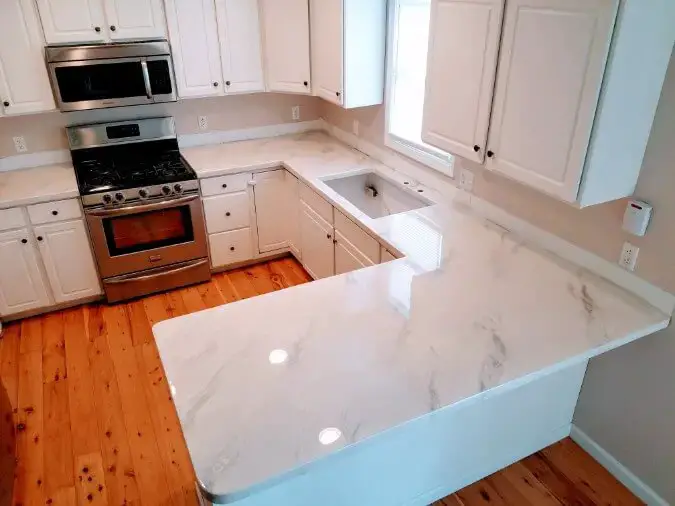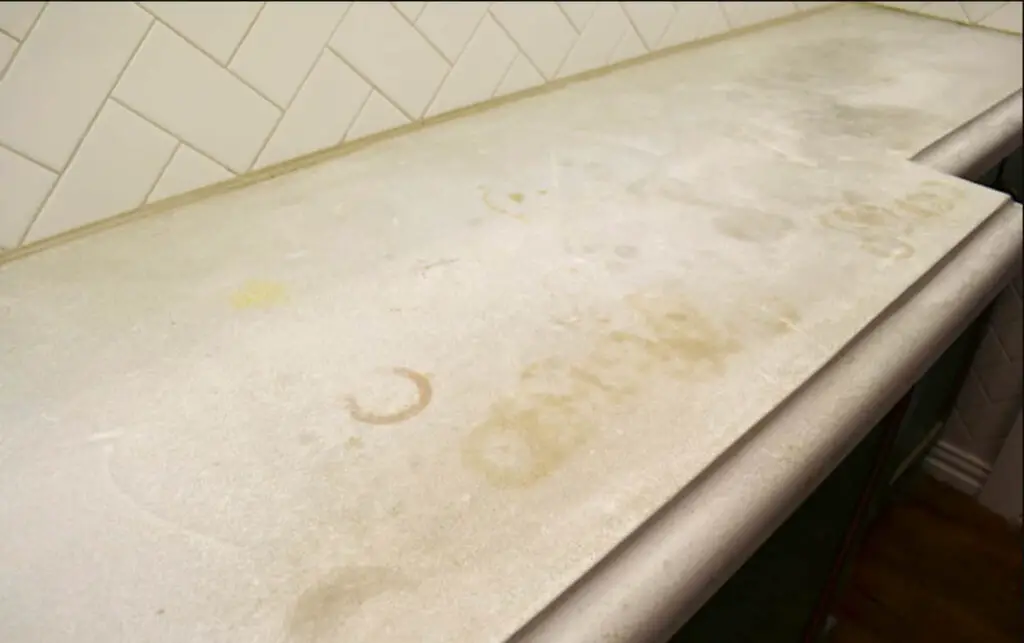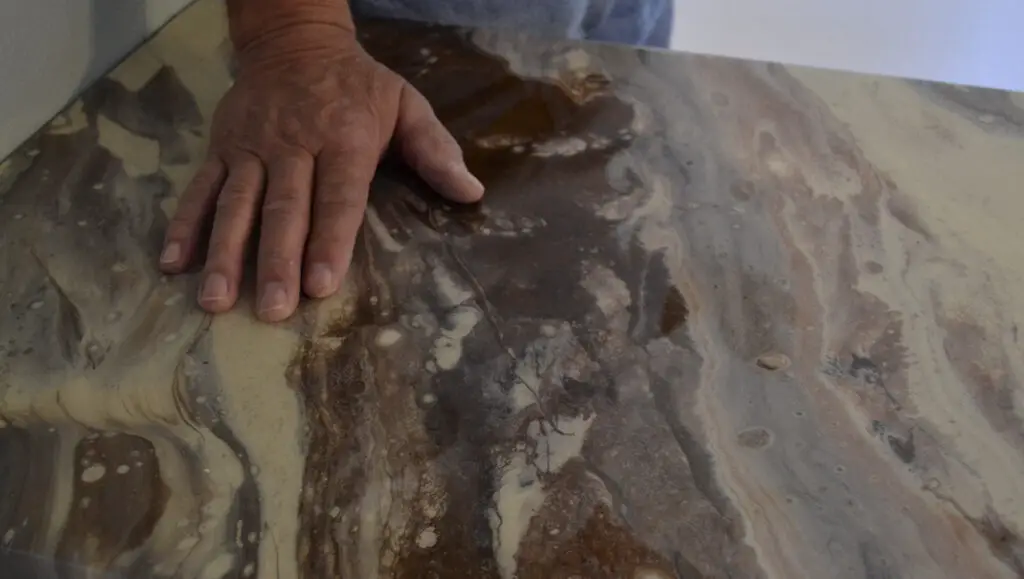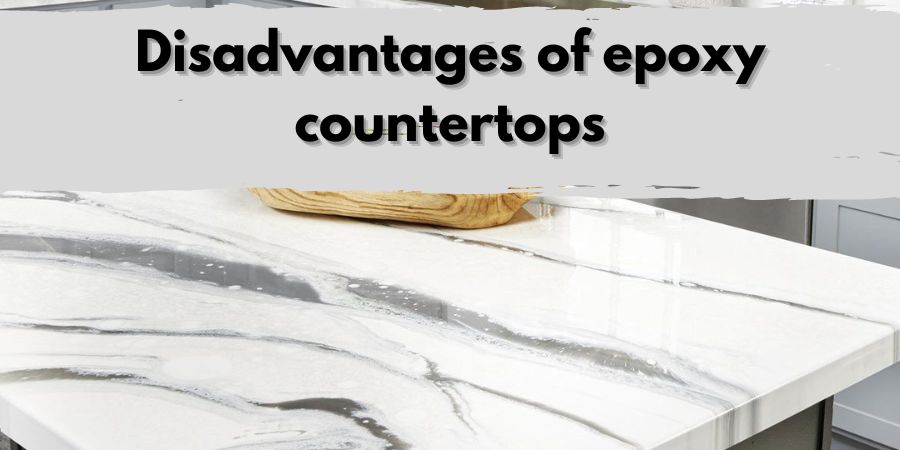Epoxy countertops have been gaining popularity in recent years due to their durability, low maintenance, and versatility in design. However, like any product, there are also some disadvantages to using epoxy for countertops.
In this article, we will explore the potential downsides of epoxy countertops, including the challenges of installation, health concerns, and compatibility issues with natural stone countertops like granite and marble.
What to know?
“Epoxy Countertops” is a misnomer as epoxy is primarily used as a refinishing product to revive old and worn surfaces. Unlike natural stone, a pre-made epoxy countertop isn’t available and it must be applied on-site.
However, during installation, VOCs are released into the air which can pose health hazards if not properly ventilated. Even with proper ventilation, it’s recommended to avoid using the space for at least a week after installation to allow the VOCs to dissipate and make it safe for food preparation on the countertop.
Disadvantages of Epoxy as countertops
1. If you have granite or marble, skip the epoxy

Epoxy and natural stone countertops like granite or marble don’t make good companions. Epoxy is often used to mimic the look of natural stone, but it’s not the best choice for refinishing these types of countertops.
Natural stone has a unique beauty with veins and patterns that should be showcased, not covered up by an artificial resin. As stoneworkers, it pains us to see such natural beauty obscured.
2. Bubbles:

Air bubbles can become trapped in the surface of epoxy countertops during installation, which can negatively affect the appearance of the countertop.
Removing these bubbles can be challenging once the epoxy has set, and may require professional assistance.
To prevent bubbles from forming, it is important to follow the manufacturer’s instructions carefully and to work in a well-ventilated area.
Proper technique and attention to detail during the installation process can help ensure a smooth, bubble-free surface.
3. Installation difficulty:
If you don’t have experience working with epoxy, installing epoxy countertops can be challenging. Achieving a smooth, level surface requires specialized equipment and expertise.
Without the proper tools and techniques, it can be tough to get the finish you want. That’s why it’s recommended to leave the installation to professionals with experience in working with the material.
This can ensure that the final product looks great and functions properly.
4. Long curing time:
Epoxy countertops take a while to cure, sometimes several days, so it’s important to avoid using the kitchen area during this time. Rushing the process could lead to a less durable finish and the need for extra repairs later on.
To make sure your countertop is strong and long-lasting, follow the manufacturer’s recommended curing time and wait until the epoxy has fully set before using the area again.
5. Odor:
Epoxy countertop installation can produce strong and unpleasant odors that may require temporary evacuation. Adequate ventilation and protective gear are essential to minimize the impact of these odors.
It’s also important to allow ample time for the area to air out after installation.
6. Staining:

Epoxy countertops are known to be susceptible to staining, particularly when they come into contact with acidic or oily substances such as citrus juices, vinegar, and cooking oils.
If these substances are not wiped up immediately, they can seep into the pores of the epoxy surface and leave unsightly stains that are difficult to remove.
Even with proper cleaning and maintenance, some stains may be permanent, which can detract from the appearance of the countertop over time.
This is an important consideration for those who use their countertops frequently and want them to maintain a clean and polished look for years to come.
How to clean Epoxy counter tops
7. Scratching:

Epoxy countertops are generally durable, but they are not completely scratch-resistant.
Sharp objects like knives or abrasive materials can scratch the surface, leaving unsightly marks that can be difficult to repair.
Repairing scratches on an epoxy countertop can require special tools and expertise, and it may not be possible to fully restore the original appearance of the surface.
It is important to take care when using sharp or abrasive materials on an epoxy countertop to avoid causing damage that may be difficult or impossible to fix.
8. Heat sensitivity:
Epoxy countertops are not heat-resistant, meaning they can be damaged when exposed to high temperatures. Placing hot pots or pans directly on the surface can cause the epoxy to warp or discolor, leading to permanent damage to the countertop.
To prevent this, it is important to use trivets or other protective pads when placing hot items on an epoxy countertop.
Additionally, it is important to avoid exposing the countertop to direct heat sources such as hot plates or burners.
Taking these precautions can help to protect your epoxy countertop from damage and ensure it remains in good condition for years to come.
9. Vulnerability to chipping:
Epoxy countertops are generally durable, but they can chip if hit with a hard object, especially in busy kitchens or high-traffic areas.
Repairing chipped epoxy is difficult and may require replacing the entire countertop, which can be expensive.
To avoid chipping, handle heavy or sharp objects with care and don’t subject the countertop to undue stress or pressure.
Sources:





